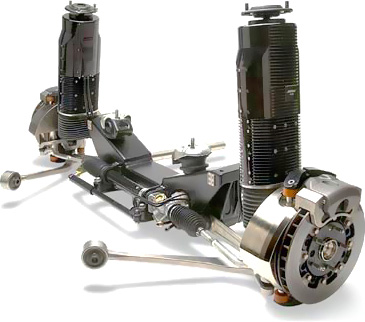
BOSTON – After nearly three decades of development and an investment of more than $100 million, Bose Corp.’s electromagnetic suspension system may be ready for prime time, the company’s founder says.
Amar G. Bose, CEO of the privately held, world famous audio equipment company that bears his name, says his representatives are in negotiation with auto makers in the U.S. and abroad concerning supplying the high-tech suspension.
However, the Bose chairman declines to name OEMs that have expressed interest. He says manufacture will begin upon receipt of orders.
Bose, presented with the Yankee Cup for Yankee ingenuity by the New England Press Assn. at the New England International Auto Show here, tells Ward’s his company’s suspension is suitable for use only in a luxury car because of its high cost.
“But we’re ready within a year to start working with some car company,” he says, adding potential customers will be identified within that time span.
He reaffirms the company’s opposition to licensing the technology, saying it would produce the major components of the system itself, while outsourcing some parts to other suppliers. Bose has a number of plants abroad and one in South Carolina that could manufacture the suspension system, he says.
The Bose semi-automatic system uses four shocks (that look like they were injected with steroids) at each corner of the vehicle. Each shock tower contains a linear electromagnetic motor acting on the strut connected to the wheel hub.

The electric motor retracts and extends the shock’s strut, absorbing or generating motion between the wheel and car body. The motor responds in milliseconds to control the strut to negate bumps. In addition, the strut can prevent rolling or pitching when the vehicle is cornering, accelerating and braking.
Power amplifiers, using switching technologies invented by Bose, magnify and deliver electrical power to the motor as instructed by an electronic control unit. Bose says actuators used in the system have been substantially reduced in weight since the system debuted more than two years ago. But the price of neodymium metal, vital to magnets used in the suspension, have doubled because of demand for the material from China, he says.
When a wheel drops into a pothole, the motors extend the struts to isolate the vehicle body from the bump. On the “far” side of the pothole, the motor works as a generator and sends power back through the amplifier so the strut retracts and allows the wheel to absorb the rising impact. The result is a smooth ride over all types of roads.
Bose says progress is being made on slimming down the suspension hardware. Weight is a major concern for vehicle makers in this era of escalating fuel prices, he notes.
However, the ex-Massachusetts Institute of Technology professor says auto makers could save engineering costs, because the Bose suspension easily can be retrofitted into existing production cars with little modification.




